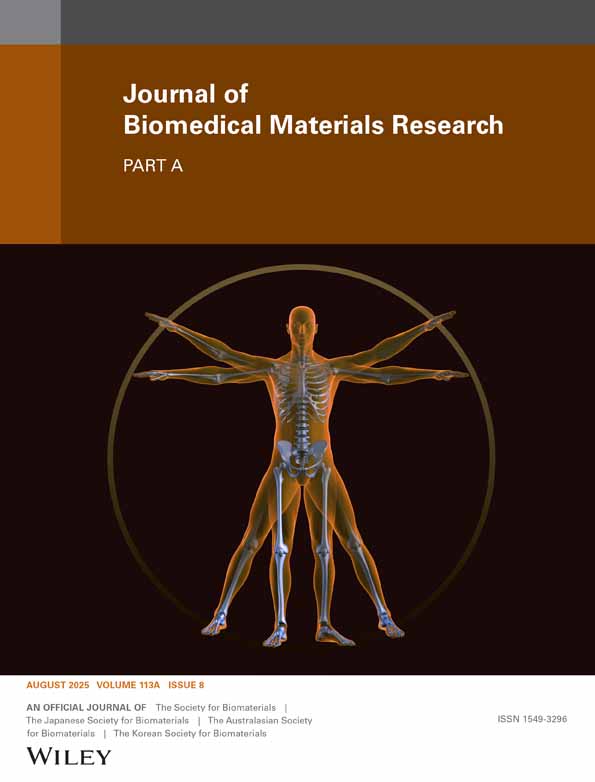Hydroxy apatite microspheres enhance gap junctional intercellular communication of human osteoblasts composed of connexin 43 and 45†
No benefit of any kind will be received either directly or indirectly by the authors
Abstract
The aseptic loosening of artificial joints with associated periprosthetic bone resorption may be partly due to the suppression of osteoblast function to form new bone by wear debris from the joint. To assess the effect of wear debris on osteoblasts, effects of model wear debris on gap junctional intercellular communication (GJIC) of normal human osteoblasts were estimated. The GJIC activity of the osteoblasts after a 1-day incubation with the microspheres was similar to that of normal osteoblasts. However, hydroxy apatite particles, which have been reported to enhance the differentiation of osteoblasts in contact with them, enhanced the GJIC function of the osteoblasts. From RT-PCR studies, not only connexin 43 but also connexin 45 is suggested to play a role in the GJIC of the osteoblasts in an early stage of coculture with the microspheres, although it is still unclear how these connexins work and are regulated in the GJIC and differentiation. However, this study suggests that there is a relationship between the early levels of GJIC and the differentiation of the cells. Therefore, estimating the effect of biomaterials, even in the microsphere form, on the GJIC of model cells, with which the biomaterials may be in contact in vivo, can provide important information about their biocompatibility. © 2005 Wiley Periodicals, Inc. J Biomed Mater Res, 2005




